Air Operations, Carolines - XIII Bomber Command B-24s attack the airfield on Peleliu.
- 39 XIII Bomber Command B-24s attack the Truk Atoll.
- 26 11th Heavy Bomb Group B-24s attack airfields in the Truk Atoll.
- During the night, VII Bomber Command B-24s attack the Truk Atoll.
[  | |   ] ]
Air Operations, CBI
BURMA
- 16 10th Air Force P-40s attack targets at Mogaung and in northern Burma.
CHINA
- 341st Medium Bomb Group B-25s and 14th Air Force P-51s, and P-40s attack Japanese Army troop concentrations at Lingpao and near Loyang.
- More than 100 P-40s and P-51s attack numerous targets in the Tungting Lake region.
INDIA
- More than 30 10th Air Force B-25s airlift ammunition to Imphal.
[  | |   ] ]
Air Operations, Europe
RAF BOMBER COMMAND
Evening Ops:
- 671 aircraft attack communications, mostly railways, at Amiens/St Roch, Amiens/Longueau, Arras, Caen, Cambrai and Poitiers. In this total are 348 Halifaxes, 285 Lancasters and 38 Mosquitos of Nos. 4, 5, 6 and 8 Groups. Bomber Command's records state that the Poitiers attack, by No. 5 Group, is the most accurate of the night and that the 2 raids at Amiens and the raid at Arras are of reasonable accuracy. The target at Cambrai is hit, but many bombs also fall in the town. The most scattered attack (also by No. 5 Group) is at Caen.
- 23 aircraft - 17 Halifaxes and 6 Lancasters - are lost from these raids; all being from Nos. 4 and 6 Groups.
A Canadian airman, Pilot Officer Andrew Charles Mynarski from Winnipeg, is awarded a posthumous Victoria Cross for his bravery on the Cambrai raid. His Lancaster, of No. 419 Squadron, is attacked by a night fighter and set on fire and the crew are ordered to abandon the aircraft. Mynarski is about to jump when he sees that the tail gunner is trapped in his turret and he goes through fierce flames to help. The rear turret is so badly it jams and can not be freed and the trapped gunner eventually waves Mynarski away. By the time he leaves the aircraft, Mynarski's clothing and parachute are on fire and he dies while being cared for by French civilians soon after he lands. The tail gunner is fortunate to survive the crash and his report on Mynarski's courage leads to the award of the Victoria Cross. Pilot Officer Mynarski is buried in the small village cemetery at Meharicourt, east of Amiens.
- 303 aircraft carry out the first raid of the new oil campaign, the target being the Nordstern synthetic oil plant at Gelsenkirchen. In this total are 286 Lancasters and 17 Mosquitos of Nos. 1, 3 and 8 Groups. The attacks opens with exceptional accuracy owing to the good work by the Pathfinders and to improved versions of Oboe sets now available. Later phases of the bombing are spoiled by the clouds of smoke from the burning target and by a rogue target indicator which falls 10 miles short of the target and is bombed by 35 aircraft. A German industrial report shows that all production at the oil plant ceased, with a loss of 1,000 tons of aviation fuel a day for several weeks, as well as the loss of other fuels.
- 17 Lancasters are lost on the raid.
Other Ops:
- 27 Mosquitos are sent to Cologne, 9 Halifaxes and 5 Stirlings lay mines off Brest and St Nazaire, 13 aircraft are on Resistance operations, and there are 39 Serrate and 13 Intruder patrols and 3 RCM sorties.
US 8th AIR FORCE
FRANCE:
- Bad weather over Germany forces a cancellation of planned attacks there, so 1,277 8th Air Force B-17s and B-24s attack 16 Luftwaffe airdromes in northwest France and six rail bridges in the Rennes and St.-Nazaire areas.
- 6 B-17s and 2 B-24s to the largest Luftwaffe fighter attack since D-day
- VIII Fighter Command fighters mount 988 sorties while escorting 8th and 9th Air Force heavy bombers, patrolling the beach area, and attacking a wide variety of communications targets in the Normandy area, including two radar installations. USAAF fighter pilots down 47 Luftwaffe fighers over western France between 0550 and 1610 hours.
- 16 VIII Fighter Command fighters and 15 pilots are lost
US 9th AIR FORCE
FRANCE:
- 509 IX Bomber Command B-26s and A-20s attack rail and road targets, defended town areas, troop concentrations, and targets of opportunity in and around the battle area.
- 15 9th Air Force fighter-bomber groups attack rail lines, gun emplacements, defended areas and towns, troops and tanks, dumps, bridges, a radar installation, and numerous other tactical and transportation targets.
US 12th AIR FORCE
FRANCE:
- 12th Air Force B-25s and B-26s attack bridges, viaducts, and rail targets north of the battle area.
- XII TAC A-20s attack a town.
- Despite bad weather, XII TAC fighter-bombers attack bridges and road along German Army lines of retreat.
[  | |   ] ]
Air Operations, Marianas - 8 Truk-based G4M 'Betty' bombers attack the main body of Task Force 58 from 0315 hours to 0415 hours. No damage results from the attack and 1 'Betty' is downed by antiaircraft fire.
- Beginning at dawn, US carrier aircraft mount heavy attacks against the main islands in the Marianas, focusing now on land targets, especially on Saipan. Task Group 58.1, detached from the main body of Task Force 58, will carry out strikes against Guam.
- At least 10—and as many as 14—Japanese ships and numerous fishing vessels are sunk in two separate strikes by Task Group 58.4 aircraft as a convoy attempts to flee from the area, and several other ships are sunk or damaged at or near Saipan. US carrier aircraft also attack a large number of sampans near Pagan Island, because it is believed the sampans are being used to transport troops between islands.
- A VF-50 F6F downs a D4Y 'Judy' dive bomber at sea 20 miles from Task Force 58 at 0613 hours. A VF-31 F6F downs another 'Judy' at sea 30 miles from the task force at 0620 hours.
- While covering air attacks and participating in sweeps that commence over Guam at 0630 hours, F6Fs and FMx down 22 Japanese aircraft over Guam and Rota.
[  | |   ] ]
Air Operations, New Guinea - Japanese aircraft attack Allied ground forces and shipping at Biak Island. One US destroyer is severely damaged by a bomb.
- 5th Air Force A-20s and P-47s attack the Hansa Bay and Wewak areas.
- 348th Fighter Group P-47 glide bombers destroy several bridges spanning the Orai River.
- 348th Fighter Group P-47s down 7 B5N 'Kate' torpedo bombers and 1 Ki-61 'Tony' fighter near Biak Island between 1030 and 1045 hours.
[  | |   ] ]
China Chinese Communist leader Mao Tse-tung announces his support of Chiang Kai-shek in the war against Japan. Similar declarations have been made before, ant the Communists still jealously guard their own territorial areas in northern China.
[  | |   ] ]
Eastern Front The Finnish 4th Div arrives in the Karelian Isthmus from eastern Karelia.
[  | |   ] ]
Germany, Home Front The first electro-boat, U-2321, is commissioned. It is a Type XXIII, a small coastal submarine, carrying two torpedoes.
[  | |   ] ]
Italy In the US 5th Army area, the port at Civitavecchia is opened to LST traffic. The IV Corps continues its pursuit of the enemy northward, advancing a little less rapidly that the VI Corps had, against gradually increasing resistance. The 36th Division, reinforced by the 361st Infantry of the 91st Division and tanks and tank destroyer units, is in an assault, its advance being screened by the 117 Cavalry Reconnaissance Squadron. Task Force Ramey, under Brig-Gen Rufus S. Ramey, consisting of the 91st Cavalry Reconnaissance Squadron, reinforce by the 141st Infantry of the 36th Division and supporting units, is formed to screen the right flank of the IV Corps and to maintain contact with the French. The Germans are resisting in the vicinity of Orbetello.
[  | |   ] ]
Marianas The operations of the US carriers go on. 3 groups continue to attack Tinian and Saipan while the other concentrates on Guam. In response to these assaults the Japanese Fleets sail from Tawitawi and Batjan. The main force from Tawitawi is quickly sighted and reported by an American submarine. Altogether there are 5 fleet carriers, 2 light carriers and 2 seaplane carriers. In support there are 5 battleships and numerous cruisers and destroyers. In every department, therefore, they are outmatched by TF 58. Adm Takeo Kurita leads the Van Force which includes the 2 seaplane carriers, 1 light carrier and 4 of the battleships. Adm Jisaburo Ozawa leads the main force with the remainder of the ships.
The plan for their operation, devised by the Commander in Chief, Adm Soemu Toyoda, intends to cope with their inferiority by relying on the help of land based aircraft from the Marianas and other nearby groups. Unfortunately from the Japanese point of view, the recent and present operations of the American carriers have drastically reduced these land based forces but the local commanders have left their superiors in ignorance of this when such knowledge will in fact prove vital in the coming battle.
The Japanese torpedo boat Otori is sunk during the raid by carrier-based aircraft.
[  | |   ] ]
New Guinea The Japanese still resist doggedly on Biak.
Maj-Gen Franklin C. Siebert, commander of the 6th Infantry Division, takes command at Wakde-Sarmi with orders to seize Lone Tree Hill.
[  | |   ] ]
Pacific The British submarine Stoic attacks a Japanese convoy of Phuket, Siam and sinks the transsport Kainan Maru (1133t).
[  | |   ] ]
Western Front The US VII Corps has still not reached the line it was meant to occupy on the first day of landing. However, its units advance both in the Cotentin peninsula and south in the direction of St Lô. On the east coast of the peninsula the 4th Div and elements of the 9th enter Crisbecq, from which the enemy has been forced to withdraw. Azeville is captured by the American 22nd Regt after a massive barrage from land and sea. The 8th Regt tries several attacks against Montebourg but is repulsed by units of the German 243rd Div. Equally unsuccessful is a new attempt by 2 regiments of the 9th Div to continue their advance west of the Merderet River.
Units of the 82nd Airborne Div, reinforced and regrouped, cross the Douve River near Benzeville-la-Bastille, trying to line up with the 101st Airborne Div at Baupte.
In the American V Corps sector the 29th Div crossed the Vire and Taute Rivers but are held up in the area of Monmartin-en-Graignes by determined German defense. The divisions of the V Corps begin the assault toward St Lô; on the left the 1st Div reaches Caumont, on the St Lô-Caen road.[WF]
The third wave of divisions is now largely ashore. At this stage there are 326,000 men, 104,000 tons of supplies and 54,000 vehicles from the Allied armies in France.[CAEN]
[  | |   ] ]
Images from June 12, 1944
Inspection of the Normandy Beachhead
|
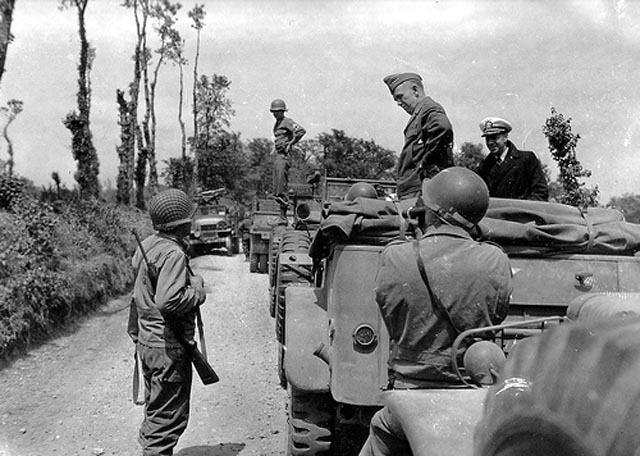 |
|
2in Mortar, Canadian Scottish Regiment
|
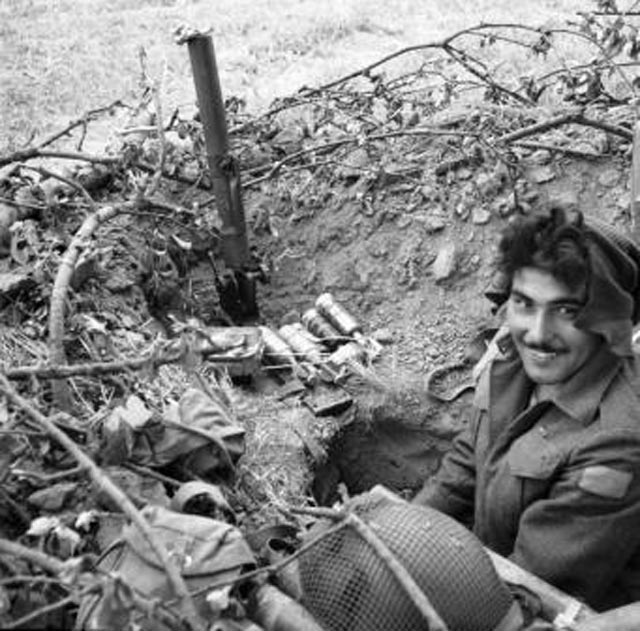 |
|
US forces and British Army Meet at Caretan
|
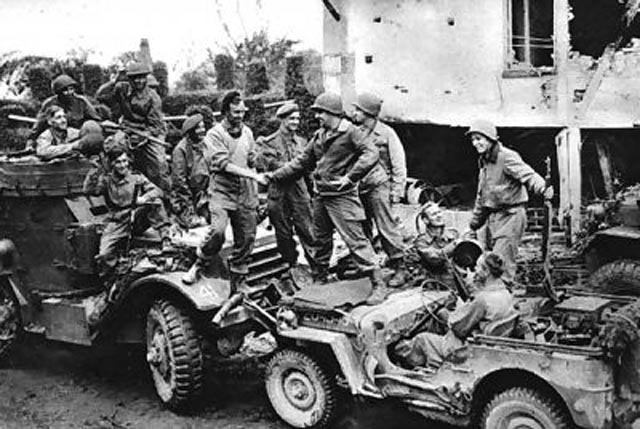 |
|
Inspecting the Normandy Beachhead
|
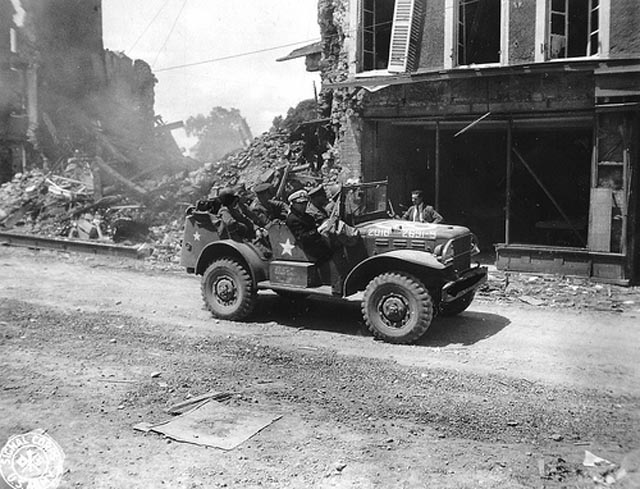 |
|
Churchill on the Kelvin
|
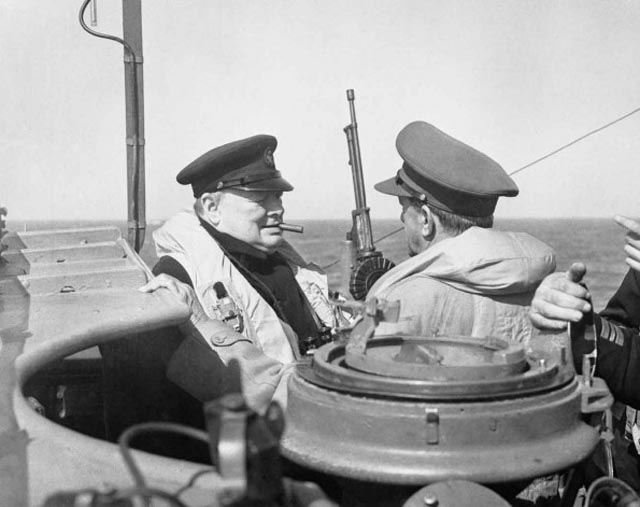 |
|
Churchill, Smuts and Brooke on the Destroyer Kelvin
|
 |
|
Montgomery and Churchill
|
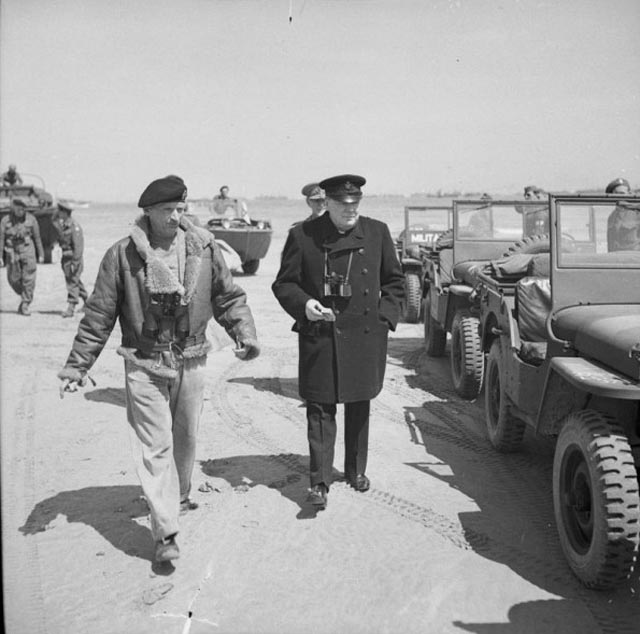 |
|
Montgomery and Churchill Touring Inland
|
 |
|
Watching Air Activity
|
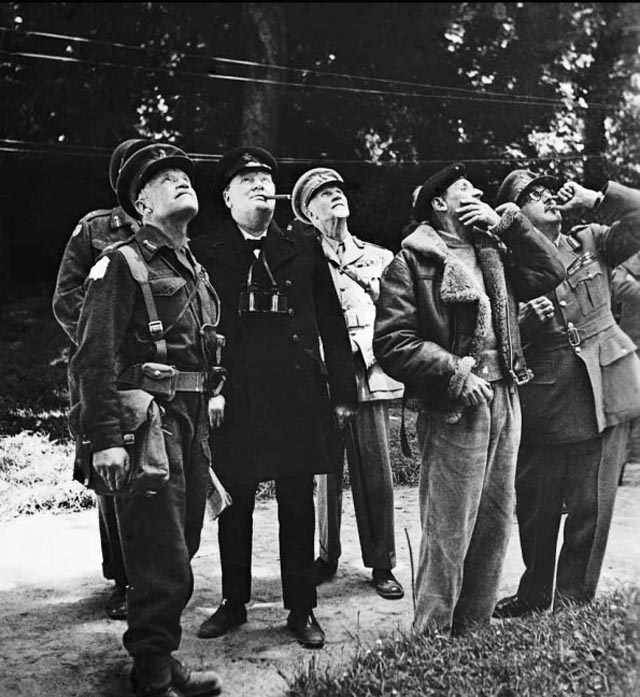 |
|
German POWs Arrive in England
|
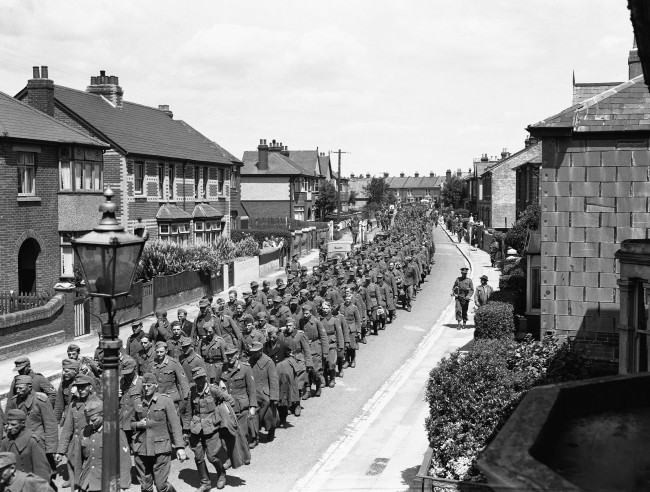 |
|
American Troops Moving Up
|
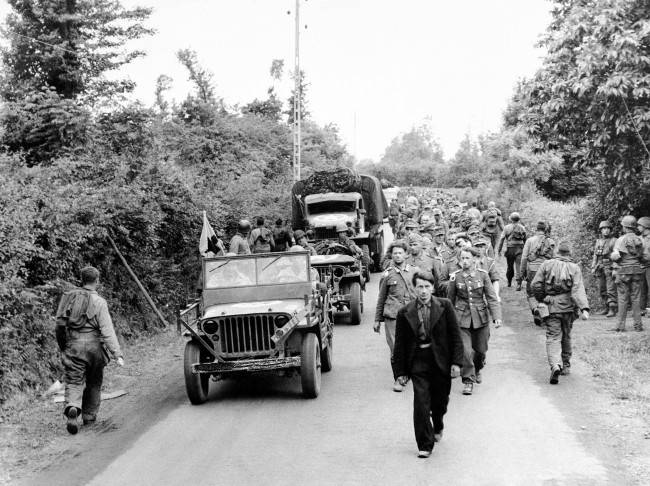 |
|
Interrogation by American Soldiers
|
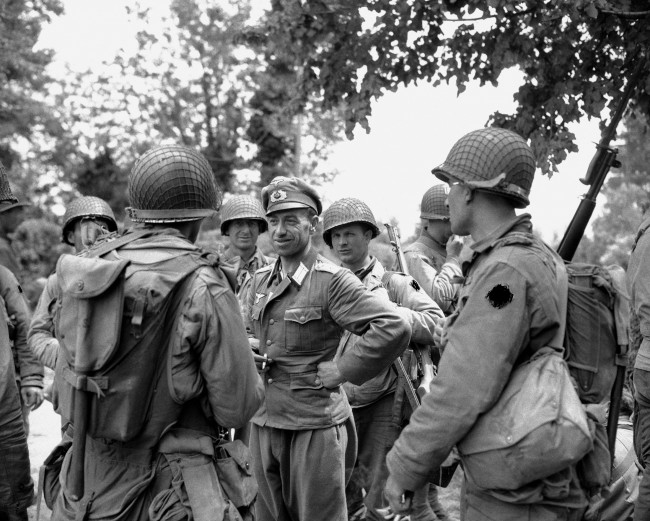 |
|
US Brass Tour the Normandy Beachhead
|
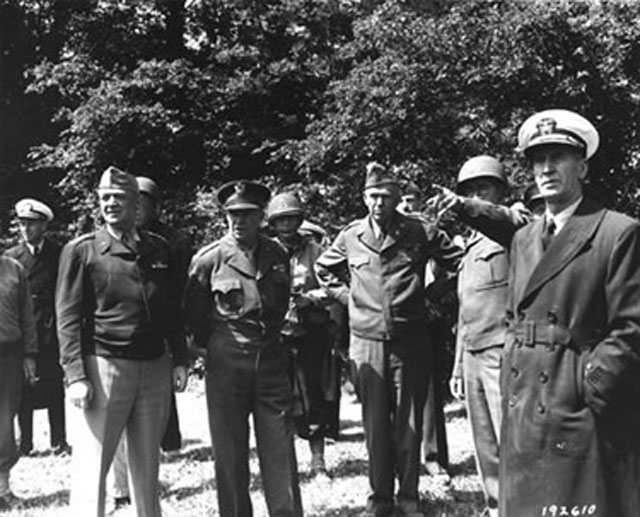 |
|
Inspecting the Normandy Beachhead
|
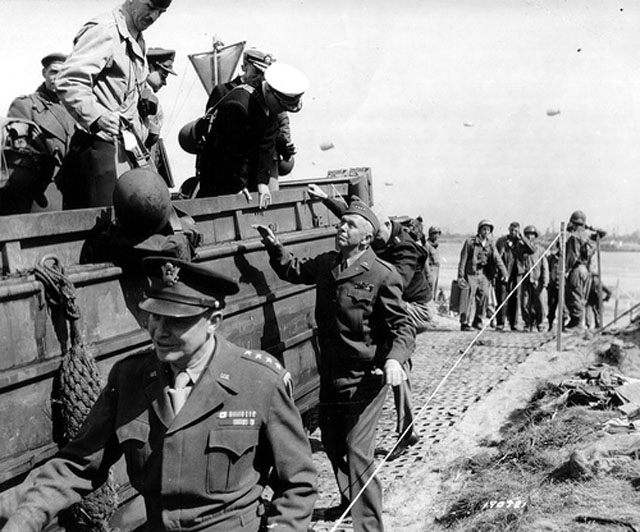 |
|
Dedication of Cemetery No 1
|
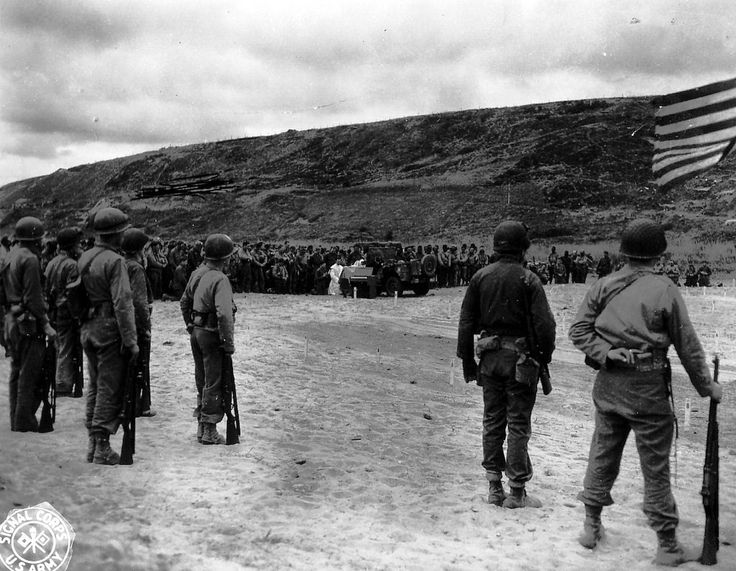 |
|
Two Destroyed Tanks
|
 |
|
|















